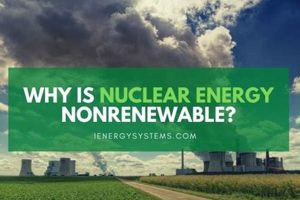
Natural resources are categorized based on their replenishment rates. Resources that can be replenished naturally over relatively short periods are considered sustainable and are called renewable resources. Examples include solar energy, wind... Read more »

The core distinction between energy sources lies in their replenishment rates. Resources like fossil fuels (coal, oil, and natural gas) and nuclear fuels (uranium) are finite; their formation takes millions of years,... Read more »

Harnessing the power of the ocean’s tides offers a consistent and predictable energy source. Unlike fossil fuels, which are finite, the cyclical nature of tides ensures a perpetually replenished supply. This characteristic... Read more »

Hydropower harnesses the energy of flowing water to generate electricity. This energy source relies on the natural water cycle, driven by solar energy, which replenishes water sources through evaporation and precipitation. A... Read more »

Finite materials, like fossil fuels (coal, oil, and natural gas) and nuclear fuels (uranium), are consumed at a rate faster than they are replenished naturally. In contrast, perpetually available supplies, such as... Read more »

The question of superior energy sources hinges on balancing various factors. Non-renewable sources, such as fossil fuels (coal, oil, and natural gas) and nuclear energy, offer high energy density and established infrastructure.... Read more »

Water-powered electricity generation relies on the continuous flow of water through rivers and streams. This flow is replenished by the natural water cycle, driven by solar energy and precipitation. Dams harness this... Read more »

The nature of an energy source’s renewability hinges on whether its supply replenishes naturally within a human timescale. Consider a solar panel: it captures sunlight and converts it into electricity. The sun,... Read more »

Categorizing energy sources based on their renewability involves distinguishing between those that are finite and those that replenish naturally. Nonrenewable sources, such as fossil fuels (coal, oil, and natural gas) and nuclear... Read more »

Nuclear energy derives from the splitting of atoms (fission) of elements like uranium, a process releasing immense heat used to generate steam, which then drives turbines to produce electricity. While the process... Read more »


